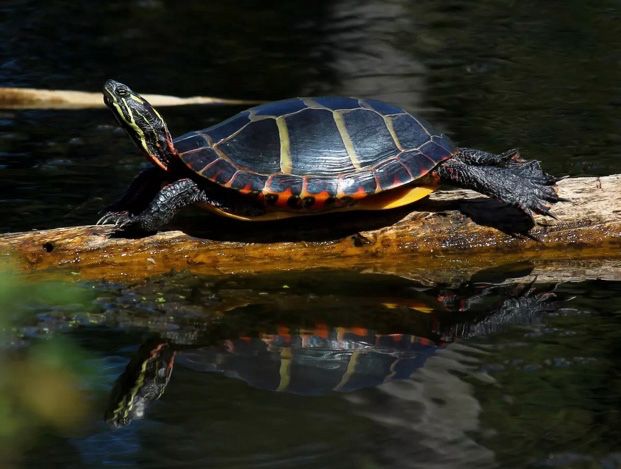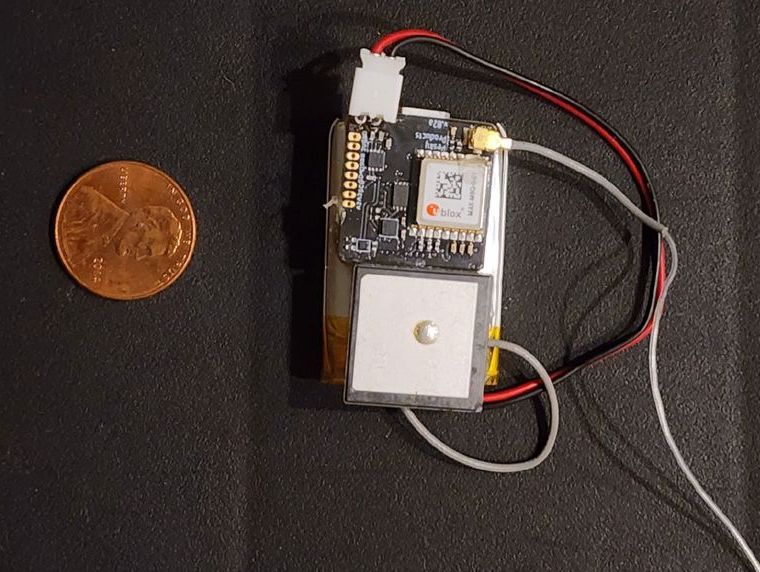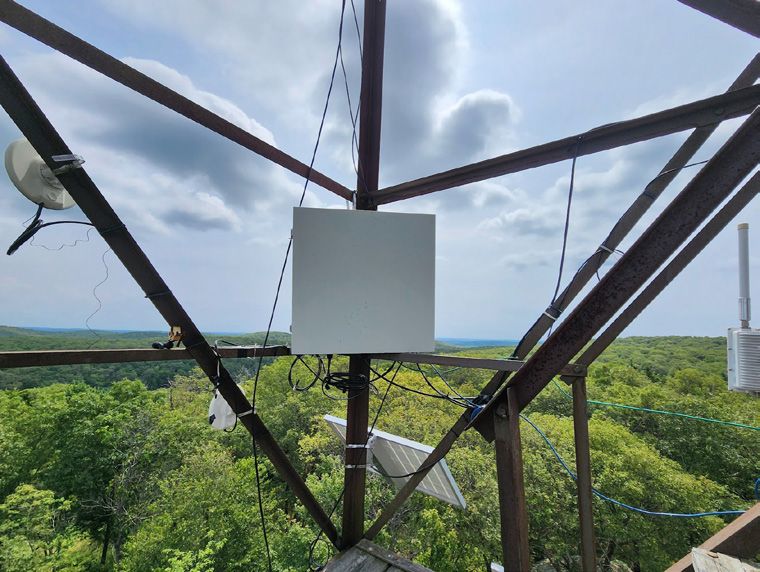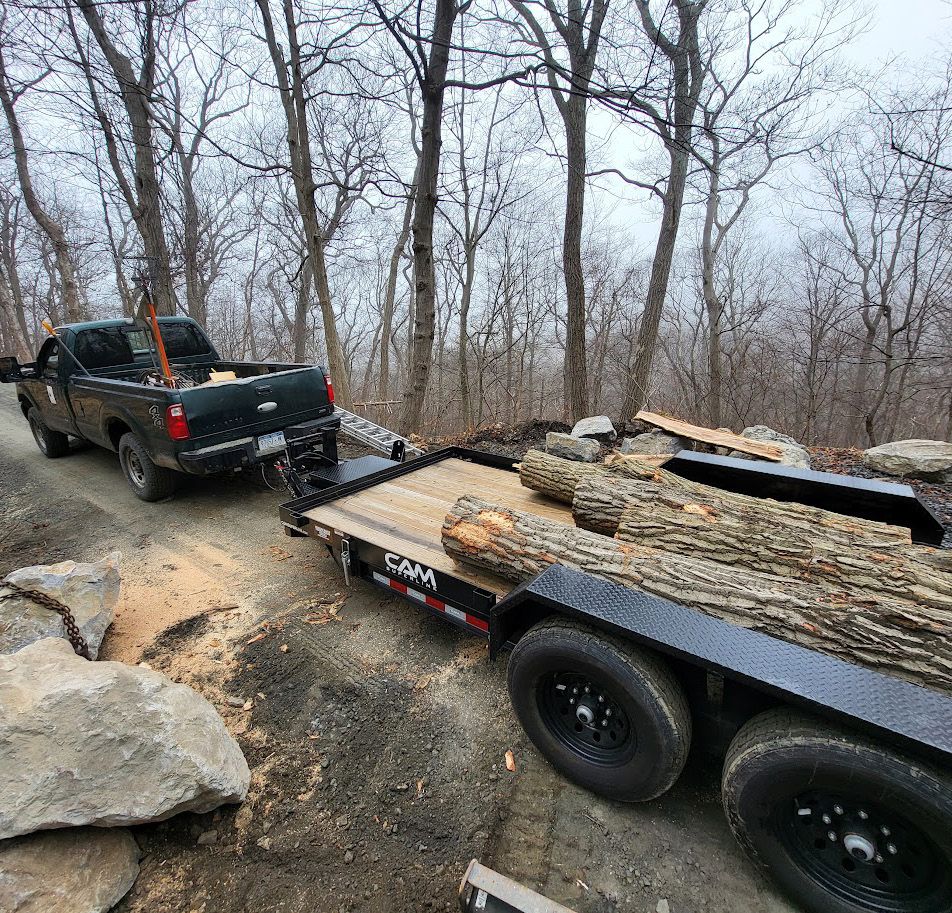Tracking Turtles: Research at Black Rock
The over four million annual visitors that pass through the American Museum of Natural History’s (AMNH) Theodore Roosevelt Hall of Biodiversity may catch a glimpse of Black Rock Forest’s forest floor on the big screen.
In June of 2023, filmmakers shadowed “Team Turtle”, a collection of students (including high school, undergraduate, and graduate students), technologists, consultants, and faculty from the AMNH’s Center for Biodiversity and Conservation and Research Experiences for Undergraduates program, Columbia University’s Ecology, Evolution and Environmental Biology Department, and Barnard College’s Summer Research Institute and beyond, as we investigated the turtles of Black Rock Forest.

You might be unaware that Black Rock Forest is home to five of the twelve freshwater turtle species native to New York State. In Black Rock Forest, the most well-studied and easily spotted of these turtles is the Eastern painted turtle (Chrysemys picta). In the mid-1990s, former Columbia University professor and current AMNH Herpetology Department curator Chris Raxworthy started a long-term mark-recapture project that has allowed researchers, students, and staff to keep track of an extensive demographic record of the painted turtle population at Black Rock Forest. By capturing turtles across multiple bodies of water, we hope to recapture the same individual turtles at different times across different water bodies to track their movement patterns. However, even with huge efforts to capture (and hopefully recapture) as many turtles as possible, we can only infer how they moved between habitats. Team Turtle wants to know more; we want to monitor the actual, real-time movements of turtles without needing to consistently set and check traps (or even be in the field at all!) while reducing our assumptions on where exactly these turtles go.
Enter technology. Once exorbitantly expensive, heavy, and bulky, GPS units that can attach to wildlife are now smaller, cheaper, and more accurate, making them much more accessible. Team Turtle, along with the Wildlife Movement Institute, built our own GPS units using modified commercial asset trackers. These trackers are small, self-contained GPS units that determine their (i.e., our turtle) location via satellites and then send that location information using Long Range (LoRa) radio technology to another device (a “gateway”). Our gateway is attached to the fire tower in the center of the Forest, where it connects to Black Rock Forest’s wireless mesh internet and uploads the newly acquired data to an online database. It’s like having an Apple AirTag glued to a turtle. Team members can log into our database and see a map displaying the locations of our turtles from the comfort of their home or office.



Left: Eastern painted turtle sunning itself; image credit: David Small. Center: Our GPS unit components include a rechargeable battery, a GPS component/antenna, and a GNAT asset tracker all connected via a circuit board; image credit Kristen Kallok. Right: The gateway is attached to the supporting structure of the fire tower with a solar panel and 12-volt batteries for power. It can connect to the internet via a Wi-Fi connection to the wireless mesh network node at the fire tower; image credit: Kristen Kallok.
With the mark-recapture data alone from 2024, we found six turtles that moved overland between nearby bodies of water, including one turtle that was first captured in 1997 in Sutherland Pond, then again in 2004 in Jim’s Pond, and in Tamarack Pond in 2024 (see Figure 1)! So, after building functional GPS units, we tested the LoRa detection range by hiking and paddling around the fire tower to assess how far away our turtles could travel while remaining detectable. We learned that our LoRa system detected us up to 1.3km away, meaning we could confidently monitor turtle movements, in real-time, across ~250 hectares, potentially documenting their movements between five water bodies.
In the future, data from these GPS units may help us improve our field effort efficiency, discover where females are nesting, and understand when large movements happen within seasons or after disturbances like flooding events or droughts. Additionally, we hope to provide data for opportunities to expand the wireless mesh network and instructions for deploying this technology for other wildlife tracking studies at Black Rock Forest and beyond.
As spring settles in, you might see some turtle movements yourself, even without technology! Keep an eye out while you’re driving for turtles emerging from their winter “hibernation” (or “brumation”) locations and, a bit later in the spring, for females journeying to find a good nesting spot, which could include your nice gravel driveway or local softball field!
—Suzanne Macey, Ph.D., Assistant Director for Capacity Development, Center for Biodiversity and Conservation, American Museum of Natural History; Adjunct Faculty, Ecology, Evolution and Environmental Biology Department, Columbia University
Spring into Action: Seasonal Stewardship in the Forest
As the days grow longer, it’s time for spring cleanup and the forest is no exception.
Spring brings a wide range of tasks that quickly fill our schedules, as months of planning shift into action. After a year of use and winter frost heaving, our roadways need to be regraded. We are also upgrading or replacing some culverts and water bars to better handle the intense, fast-moving storms that are becoming more frequent. Thanks to grant support, we were able to invest in the new tools and equipment needed to get these jobs done more efficiently.
March and April are ideal for trail evaluations, as the melting and thawing ground reveals how water flows across the land. Restoring the proper drainage is key to maintaining access, and these natural patterns can help guide our trail maintenance strategy by showing us where to focus our efforts and how to work smarter to improve and preserve our trail network.
Winter’s ice storms didn’t go unnoticed by the forest. Many trees and shrubs—especially those less tolerant of heavy ice and wind—suffered damage. Spring keeps us busy removing the downed trees and limbs from trails and roads and pruning any live trees that were damaged to give these plants their best chance at recovery.
As you hike through Black Rock Forest this spring, take a moment to notice the subtle signs of stewardship—freshly graded roads, improved drainage, carefully pruned trees—all part of the ongoing work to keep the forest healthy, resilient, and ready for the seasons ahead.


Education Department Goes on The Road!
This past school year, Black Rock Forest staff brought our mission of hands-on science education and environmental connection directly into classrooms, campuses, and community events. Here are just a few highlights from our recent visits!
2024 October 10 – Aaron and Jessica had a great time participating in the Day in the Life of the Hudson & Harbor at Donahue Memorial Park. They partnered with the Orange County Water Authority’s Education & Outreach Specialists, Sarah Archbald and Ashley Hickey, to help the 50 students who came from Ms. Pagano’s science classes at Cornwall Central Middle School.


2024 October 15 – Isabel and Jessica visited The School at Columbia campus. They got to see the Discovery Room, interact with a variety of grades and lessons, and introduce themselves to the entire faculty after school.
2024 November 18 – Isabel and Jessica visited the Storm King School campus with a lovely tour by Head of School, Lisa Shambaugh. The artwork designs were so inspiring, and it was great to meet a variety of faculty.


2024 December 4 – Isabel, Scott, and Jessica visited the American Museum of Natural History campus to meet with staff from both their Research and Education departments. They were able to exchange ideas for future collaborations and opportunities and even stopped by the Invisible Worlds Immersive Experience.
2025 February 3 – 7th grade English teacher, Vicky Fiorisi, attended a Newburgh Teacher Center Professional Development training held at Black Rock Forest last July, which inspired her to revive the concept of Peer Leaders acting as “sherpas”, or hiking mentors, for younger 5th grade classes. Ms. Fiorisi advises the Meadow Hill Student Government this year and created the title of “Peer Leaders” for leading hikes in the Forest!
Ms. Fiorisi also invited Aaron and Jessica to the monthly Meadow Hill School faculty meeting to talk about our Forest and share what resources are available for teachers to plan field trips. This was the largest audience Aaron and Jessica have ever presented to (95 teachers)!

2025 March 20 – Aaron and Jessica hosted a table at Meadow Hill School’s first STEAM Night (Newburgh Enlarged City School District). The Student Government members that hosted this event were trained to lead younger students on hikes by BRF staff earlier in the school year.
Forest News in Brief

On March 8, we trained 18 new phenology volunteers!
This growing network is tracking spring’s arrival and collecting data used by scientists across the country. The National Phenology Network reports that spring arrived 2 weeks early in our region this year when compared to the historic normal. However, looking at BRF data spring is a few days later than last year and about on par with the 4-year average. A big thanks to all our volunteers for contributing to this valuable dataset!
Join us!
Spring is here, and Black Rock Forest has a full calendar of events to help you get outside and give back! From our annual luncheon benefit on May 14 to guided bird walks, archeology digs, and an Earth Day clean-up, there’s something for everyone. Join us to explore, connect, and support conservation in the forest.

Hudson Highlands Research Symposium
If you are a student or scientist that conducts research at Black Rock Forest or within the Hudson Highlands, please consider presenting your work at our biennial research symposium on June 23rd! Click here for more details.
Become a Trail Ecology Surveyor – Training on May 7!
Do you love hiking and discovering nature finds along the way? Help protect Black Rock Forest and other natural areas in our region by becoming a Trail Ecology Surveyor! Volunteers in this program will play a vital role in detecting and reporting several high priority invasive species as well as native plants showing heightened resistance to forest pests and pathogens. No experience needed—just curiosity and a commitment to conservation. Join others for a free training on May 7 to get started.
Learn more and sign up here:
https://support.nynjtc.org/page/81551/event/1


Please consider supporting our programs by becoming a Friend of the Forest

If you would like to download
a copy of this Spring 2025 newsletter CLICK HERE.

